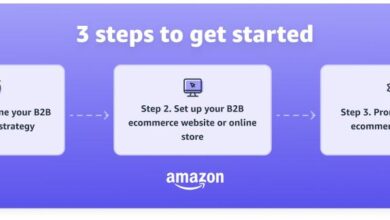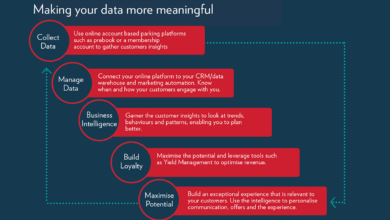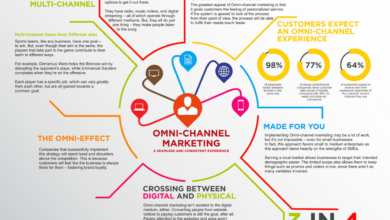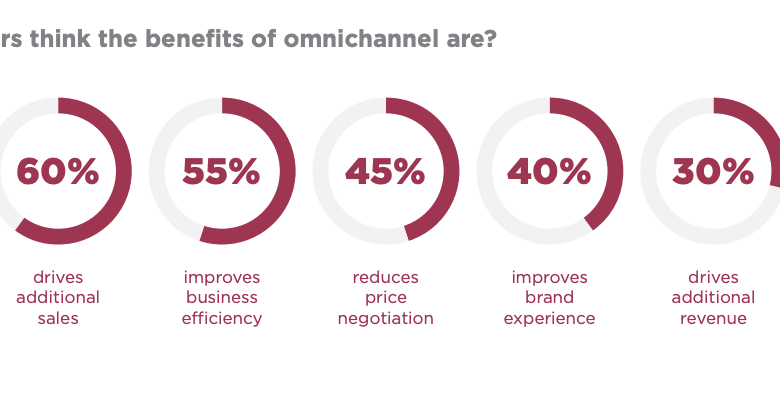
Omnichannel Marketing Auto Industry Challenges & Opportunities
Omnichannel marketing challenges and opportunities in car industry and automotive – Omnichannel marketing challenges and opportunities in the car industry and automotive sector are reshaping how dealerships connect with customers. It’s no longer enough to simply have a website and a showroom; today’s car buyers expect a seamless experience across every touchpoint, from online research to the final purchase and beyond. This means navigating a complex landscape of digital channels, managing customer data responsibly, and maintaining a consistent brand voice across all platforms.
But the rewards for mastering omnichannel marketing are significant: increased customer loyalty, higher conversion rates, and a stronger competitive edge in a rapidly evolving market.
This post dives deep into the specific challenges and opportunities presented by omnichannel marketing in the automotive world. We’ll explore successful strategies, analyze key performance indicators, and look ahead to future trends driven by emerging technologies like AI and machine learning. Buckle up, it’s going to be a ride!
Defining Omnichannel in the Automotive Industry
Omnichannel marketing in the automotive industry is more than just having a website and a few social media accounts; it’s about creating a seamless and integrated customer experience across all touchpoints. Unlike other industries where the purchase process might be simpler, buying a car is a significant investment involving considerable research, comparison, and often, a long-term relationship with the brand.
This necessitates a sophisticated omnichannel approach that caters to the unique complexities of the automotive buying journey.The automotive sector’s omnichannel strategy must account for the diverse needs and preferences of its customers. Consider the range of demographics, from younger buyers prioritizing online research and digital interactions to older generations who might prefer in-person interactions at dealerships. The high value of the product also means customers require a high degree of personalized service and support throughout the process, demanding a more nuanced approach than simpler, lower-priced purchases.
The Automotive Customer Journey and Touchpoints
The car buying journey is multifaceted, involving numerous touchpoints across various channels. It typically begins with online research, where potential buyers explore vehicle specifications, reviews, and pricing on manufacturer websites, automotive review sites, and social media platforms. This online phase often progresses to visiting dealership websites, configuring vehicles, and potentially scheduling test drives. The journey then transitions to the physical dealership, where the customer interacts with sales representatives, evaluates vehicles in person, and finalizes the purchase.
Post-purchase, the relationship continues through service appointments, warranty claims, and ongoing marketing communications. A successful omnichannel strategy connects all these touchpoints seamlessly.
Examples of Successful Omnichannel Strategies in the Automotive Industry
Several leading automotive brands have successfully implemented omnichannel strategies. The key is to ensure a consistent brand message and customer experience across all channels, enabling buyers to transition seamlessly between online and offline interactions.
| Brand | Strategy | Channels Used | Results |
|---|---|---|---|
| Tesla | Direct-to-consumer sales model with a strong online presence, emphasizing digital configuration and test drive scheduling. | Website, mobile app, online configurator, social media, service centers | Significant market share gains and disruption of traditional dealership model; high customer engagement through the app. |
| BMW | Integrated online and offline experiences, allowing customers to research vehicles online and then seamlessly transition to a dealership for a test drive and purchase. | Website, dealership websites, social media, email marketing, in-dealership experiences | Improved customer satisfaction and conversion rates; enhanced brand loyalty. |
| Ford | Utilizes a multi-channel approach combining digital marketing with a robust dealership network, providing personalized experiences through CRM systems. | Website, mobile app, social media, email marketing, dealership network, personalized online advertisements | Increased lead generation and sales; improved customer retention through personalized communication. |
| Toyota | Focuses on building strong relationships with customers through various touchpoints, offering online resources, financing options, and post-purchase support. | Website, mobile app, social media, email marketing, dealership network, customer service centers, loyalty programs | Strong brand loyalty and positive customer reviews; high customer lifetime value. |
Challenges of Omnichannel Automotive Marketing
Implementing a truly seamless omnichannel experience in the automotive industry is a complex undertaking, fraught with technological, data-related, and organizational hurdles. The need to provide a consistent and personalized experience across various touchpoints, from online configurators to dealership visits, presents significant challenges that require careful planning and execution. Overcoming these challenges is crucial for maximizing customer engagement and driving sales.
Technological Hurdles in Seamless Omnichannel Experiences, Omnichannel marketing challenges and opportunities in car industry and automotive
Creating a truly integrated omnichannel experience requires robust technology that can seamlessly connect various platforms and systems. This includes everything from the website and mobile app to the CRM, inventory management systems, and the dealer management systems (DMS). A lack of integration between these systems can lead to data silos, inconsistent messaging, and a fragmented customer journey. For example, a customer configuring a car online might find that the options and pricing available online don’t match what’s offered at the dealership, creating a frustrating and confusing experience.
Furthermore, the technological challenge extends to ensuring compatibility across different devices and operating systems, guaranteeing a smooth and consistent experience regardless of how the customer chooses to interact with the brand. The lack of a unified platform and the complexity of integrating legacy systems with newer technologies present significant obstacles.
Data Integration and Customer Data Privacy Challenges
Gathering and integrating customer data from various sources—website interactions, CRM systems, dealership records, and marketing automation platforms—is critical for personalized marketing. However, ensuring data consistency and accuracy across all platforms presents a significant challenge. Data discrepancies can lead to inaccurate customer profiles and ineffective targeting. Furthermore, the automotive industry is subject to stringent data privacy regulations like GDPR and CCPA, requiring robust data security measures and transparent data handling practices.
Balancing the need for personalized marketing with the imperative of protecting customer privacy is a delicate act requiring careful consideration of data collection, storage, and usage policies. A single breach of customer data could severely damage a brand’s reputation and result in significant financial penalties.
Maintaining Consistent Branding and Messaging Across Channels
Consistency in branding and messaging is crucial for building a strong brand identity and fostering customer trust. However, maintaining consistency across multiple channels, each with its own unique characteristics and audience, is challenging. Different teams might manage different channels, leading to variations in tone, style, and messaging. For instance, a social media campaign might adopt a more informal and playful tone compared to the formal language used on the company website.
This lack of consistency can confuse customers and dilute the brand’s message. Effective omnichannel marketing requires a centralized brand management system that ensures consistent messaging and visual identity across all touchpoints.
Coordinating Marketing Efforts Across Departments and Agencies
Managing and coordinating marketing efforts across various departments (sales, marketing, service) and external agencies is another major challenge. Different teams might have conflicting priorities or use different metrics to measure success, leading to a lack of alignment and coordination. For example, the sales team might prioritize immediate sales conversions, while the marketing team focuses on long-term brand building.
This lack of synergy can hinder the effectiveness of omnichannel marketing initiatives. Successful omnichannel marketing requires strong interdepartmental communication, clear roles and responsibilities, and a shared understanding of marketing objectives. A centralized marketing management system can help improve coordination and communication across teams.
Opportunities Presented by Omnichannel Marketing: Omnichannel Marketing Challenges And Opportunities In Car Industry And Automotive
The automotive industry, traditionally reliant on dealership networks, is undergoing a digital transformation. Omnichannel marketing presents a unique opportunity to bridge the gap between online and offline experiences, creating a seamless and personalized journey for car buyers. By leveraging data gathered across multiple touchpoints, manufacturers and dealerships can significantly enhance customer engagement, streamline sales processes, and cultivate lasting loyalty.
This results in increased efficiency, higher conversion rates, and a stronger brand reputation.
The ability to understand and cater to individual customer preferences across various channels is a game-changer. It allows for more effective targeting, personalized messaging, and ultimately, a better customer experience. This enhanced experience translates directly into improved sales performance and stronger customer relationships.
Personalized Marketing Strategies Based on Customer Data
Effective omnichannel marketing hinges on collecting and analyzing customer data from various sources—website interactions, social media engagement, CRM systems, dealership visits, and even service appointments. This comprehensive data allows for the creation of highly personalized marketing campaigns. For instance, a customer who frequently browses electric vehicle specifications online might receive targeted emails showcasing the latest EV models and financing options.
Conversely, a customer who recently had their car serviced might receive a follow-up email offering a discount on their next service visit. This level of personalization fosters a stronger connection and builds trust.
Enhancing Customer Engagement and Loyalty Through Omnichannel Interactions
Seamless transitions between online and offline channels are critical for enhancing customer engagement. Imagine a customer researching a car online, configuring it using a virtual tool, then scheduling a test drive at their preferred dealership directly through the website. This smooth, integrated experience significantly improves engagement. Furthermore, personalized email campaigns, targeted social media ads, and loyalty programs that reward repeat purchases across channels can foster strong customer relationships and drive repeat business.
A well-structured loyalty program, for example, could offer exclusive discounts, early access to new models, or priority service appointments, incentivizing customers to stay within the brand’s ecosystem.
Improving Lead Generation and Sales Conversion Efficiency
Omnichannel marketing can dramatically improve lead generation and sales conversion. By tracking customer interactions across all channels, marketers can identify high-potential leads and nurture them through the sales funnel more effectively. For example, a lead who downloads a brochure online might receive a personalized follow-up call from a sales representative, increasing the likelihood of a successful conversion. Automated email sequences triggered by specific actions (e.g., website visits, test drive scheduling) can also help guide prospects through the buying process, increasing efficiency and reducing the sales cycle.
Supporting Different Stages of the Customer Lifecycle
An effective omnichannel strategy must support customers at every stage of their lifecycle:
- Awareness: Targeted social media advertising and engaging content marketing (e.g., blog posts, videos) can raise brand awareness and attract potential customers.
- Consideration: Personalized email campaigns showcasing relevant vehicle features and comparisons, along with online configurators and virtual showrooms, help customers evaluate their options.
- Decision: Test drive scheduling, financing options presented online, and personalized communication from sales representatives guide customers towards a purchase decision.
- Action: Streamlined online purchase processes, including digital paperwork and financing applications, make the actual purchase as convenient as possible.
- Loyalty: Post-purchase engagement through personalized email marketing, exclusive loyalty programs, and proactive service reminders cultivate lasting customer relationships and encourage repeat business.
Specific Channel Strategies
Successfully navigating the omnichannel landscape in the automotive industry requires a strategic approach to each individual channel. This means understanding how each platform interacts with the others to create a seamless and engaging customer journey. Below are some specific channel strategies designed to maximize impact and drive sales.
Social Media Marketing Campaign to Drive Website Traffic
A successful social media campaign needs a clear objective: driving traffic to the dealership’s website. This requires targeted advertising, engaging content, and consistent posting across relevant platforms. For example, a luxury car dealership might focus on Instagram and Facebook, showcasing high-quality images and videos of their vehicles in stylish settings. They could run targeted ads based on demographics, interests (e.g., luxury travel, high-end fashion), and location, directing users to a dedicated landing page on their website featuring special offers or new inventory.
Short, attention-grabbing video content showcasing vehicle features and benefits could also be used. The key is to create content that resonates with the target audience and encourages them to click through to learn more. Regular contests and giveaways could further incentivize engagement and website visits. Analytics should be closely monitored to track campaign performance and optimize strategies over time.
Integrating Online and Offline Channels to Enhance the Test Drive Experience
Bridging the gap between online and offline interactions is crucial for a positive test drive experience. The process should start online, with customers scheduling test drives through the dealership website or a dedicated app. This online booking system should integrate with the dealership’s CRM, providing sales representatives with customer information in advance. During the test drive, the salesperson can utilize a tablet to showcase additional vehicle features, financing options, and answer any questions.
Post-test drive, a follow-up email can be sent with a personalized summary of the discussion, links to relevant resources, and a reminder of the financing options discussed. This integrated approach makes the experience more efficient and personalized for the customer, ultimately improving their overall satisfaction.
Email Marketing Strategy for Lead Nurturing and Personalized Vehicle Recommendations
Email marketing is a powerful tool for nurturing leads and providing personalized vehicle recommendations. The strategy should segment customers based on their online behavior, vehicle preferences, and past interactions. For example, customers who have viewed SUVs on the website could receive emails showcasing new SUV models, special offers, and customer reviews. Emails should be visually appealing, mobile-friendly, and include clear calls to action, such as scheduling a test drive or requesting a quote.
Automated email sequences can be implemented to nurture leads over time, providing valuable information and gradually building trust. Personalization is key; addressing customers by name and tailoring the content to their individual needs increases engagement and conversion rates. A/B testing different email subject lines, content, and calls to action helps to optimize the campaign’s effectiveness.
Augmented Reality (AR) or Virtual Reality (VR) Integration for Improved Customer Experience
AR/VR technologies offer immersive experiences that can significantly enhance the customer journey. Imagine an AR application that allows customers to virtually place a vehicle in their driveway using their smartphone camera. They can then view the car from different angles, change the color, and even open the doors and trunk virtually. This allows customers to visualize the vehicle in their own environment, making the decision-making process more engaging and less abstract.
For VR, a dealership could offer a fully immersive virtual showroom experience, allowing customers to explore different models, interact with virtual sales representatives, and take a virtual test drive from the comfort of their home. These immersive experiences can significantly reduce the need for physical visits to the dealership, expanding the reach to potential customers in remote locations and those with limited mobility.
These virtual experiences could also incorporate interactive elements such as 360° views of the vehicle’s interior and exterior, and the ability to explore different features and specifications.
Measuring Omnichannel Success

Measuring the effectiveness of your omnichannel automotive marketing strategy is crucial for optimizing ROI and ensuring your efforts are driving sales and customer loyalty. It’s not enough to simply run campaigns across various channels; you need a robust system for tracking performance and identifying areas for improvement. This requires a multifaceted approach encompassing various KPIs and sophisticated analytical tools.Successful omnichannel marketing in the automotive industry hinges on a clear understanding of how customers interact with your brand across different touchpoints.
This understanding informs future strategies and allows for more personalized and targeted campaigns. Without proper measurement, you’re essentially driving in the dark, unable to determine what’s working and what needs adjustment.
Key Performance Indicators (KPIs) for Omnichannel Automotive Marketing
Several key performance indicators are vital for evaluating the success of an omnichannel strategy. These KPIs provide a holistic view of performance across all channels, offering insights into customer behavior and campaign effectiveness. Focusing on a balanced selection of these metrics allows for a more comprehensive understanding of your marketing impact.
- Website Traffic and Engagement: Monitor website visits, bounce rate, time spent on site, and pages viewed to understand online customer behavior. This data helps assess the effectiveness of online advertising and content marketing.
- Lead Generation and Conversion Rates: Track the number of leads generated through each channel (website forms, social media, email campaigns, etc.) and the conversion rate from lead to sale. This helps identify high-performing channels and areas for improvement.
- Customer Acquisition Cost (CAC): Calculate the cost of acquiring a new customer through each channel. This is crucial for optimizing marketing spend and ensuring a positive return on investment.
- Customer Lifetime Value (CLTV): Estimate the total revenue a customer will generate throughout their relationship with your brand. This helps assess the long-term value of your omnichannel efforts.
- Social Media Engagement: Measure likes, shares, comments, and mentions to gauge brand awareness and customer sentiment on social platforms.
- Sales Attributed to Each Channel: Use attribution modeling to accurately assign sales to the channels that contributed to the purchase decision. This is essential for understanding the true impact of each channel.
Methods for Tracking Customer Interactions Across Multiple Channels
Tracking customer interactions across various channels requires a robust tracking system that integrates data from different sources. This holistic view of the customer journey provides valuable insights into their preferences and behaviors, enabling more effective targeting and personalization.Effective tracking involves using unique identifiers (like cookies and customer IDs) to link interactions across channels. Marketing automation platforms and Customer Relationship Management (CRM) systems play a critical role in collecting and consolidating this data.
Furthermore, integrating your CRM with your website analytics and other marketing tools provides a unified view of customer interactions. This allows you to build a complete picture of the customer journey, from initial awareness to final purchase and beyond.
Comparison of Analytical Tools for Measuring Omnichannel Marketing Performance
Several analytical tools can help measure omnichannel marketing performance. The choice depends on your specific needs, budget, and technical capabilities. Each tool offers unique features and strengths, and understanding these differences is key to selecting the right solution.
| Tool Name | Key Features | Strengths | Weaknesses |
|---|---|---|---|
| Google Analytics 360 | Cross-channel attribution, advanced segmentation, real-time reporting, custom dashboards, integration with other Google Marketing Platform tools. | Comprehensive data, powerful analysis capabilities, scalability, integration with other Google tools. | High cost, complex setup and configuration, requires technical expertise. |
| Adobe Analytics | Cross-channel measurement, predictive analytics, customer journey visualization, robust segmentation, custom reporting. | Advanced analytics capabilities, flexible customization, strong customer support. | High cost, steep learning curve, requires significant technical resources. |
| Salesforce Marketing Cloud | Marketing automation, email marketing, social media management, campaign tracking, CRM integration. | Strong CRM integration, robust marketing automation capabilities, comprehensive campaign management. | Can be complex to implement and manage, may require significant training for users. |
Future Trends in Omnichannel Automotive Marketing
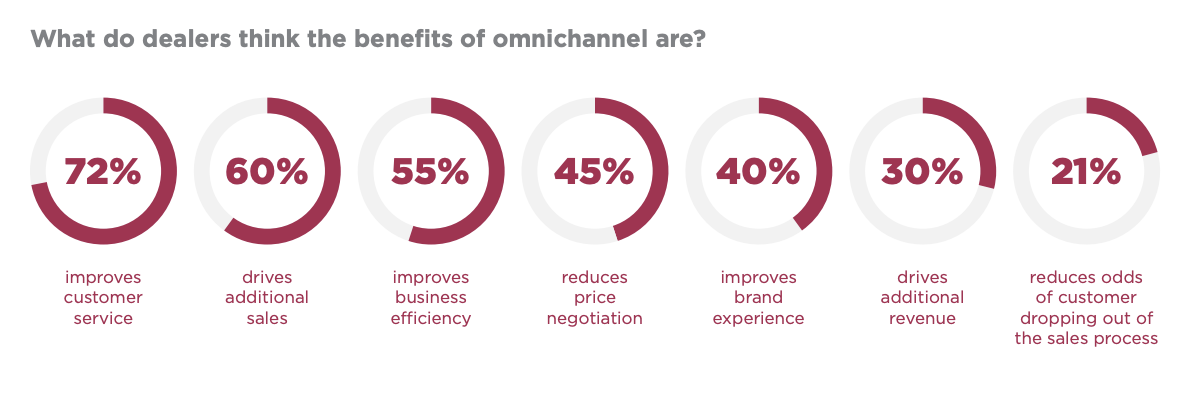
The automotive industry is on the cusp of a significant transformation, driven by rapid technological advancements and evolving consumer expectations. Future omnichannel strategies will need to be agile, data-driven, and deeply personalized to remain competitive in this dynamic landscape. The lines between online and offline interactions will continue to blur, demanding a seamless and integrated customer journey across all touchpoints.The integration of emerging technologies will fundamentally reshape the automotive omnichannel experience.
The Impact of Artificial Intelligence and Machine Learning
AI and machine learning are poised to revolutionize automotive marketing by enabling hyper-personalization and predictive analytics. AI-powered chatbots can provide instant customer support, answer frequently asked questions, and guide customers through the buying process 24/7. Machine learning algorithms can analyze vast amounts of customer data to identify purchasing patterns, predict future needs, and tailor marketing messages with unprecedented accuracy.
For example, a manufacturer might use machine learning to identify customers likely to trade in their vehicles soon and proactively offer them tailored financing options or incentives. This proactive approach significantly enhances customer engagement and loyalty. Furthermore, AI can optimize ad targeting, ensuring that marketing resources are allocated efficiently to reach the most promising prospects. This results in improved return on investment (ROI) and a more streamlined marketing process.
The Future Role of the Dealership
While the digital realm is gaining prominence, the dealership remains a crucial component of the omnichannel strategy. However, its role is evolving. Dealerships will transition from primarily transactional spaces to experience centers, focusing on building relationships and providing personalized service. This means offering test drives, showcasing vehicle features, and providing expert advice in a welcoming and engaging environment.
Dealerships will leverage digital tools to enhance the customer experience, offering online appointment scheduling, virtual tours, and personalized vehicle configurations. Imagine a dealership that uses augmented reality (AR) to allow customers to visualize different vehicle customizations in real-time, or virtual reality (VR) to experience a test drive from the comfort of the showroom. This blend of digital and physical interactions creates a compelling and memorable customer journey.
Successful dealerships will embrace technology to streamline operations, improve efficiency, and enhance the overall customer experience.
Personalized Experiences and AI-Driven Recommendations
Personalization is no longer a luxury; it’s a necessity in the automotive industry. AI-driven recommendations will play a crucial role in delivering tailored experiences. By analyzing customer data, including browsing history, social media activity, and past purchases, AI can recommend relevant vehicles, financing options, and add-on services. For instance, a customer who frequently searches for fuel-efficient vehicles on the manufacturer’s website might receive targeted ads promoting hybrid or electric models.
AI can also personalize email marketing campaigns, sending customized offers and reminders based on individual customer preferences and behavior. This level of personalization fosters stronger customer relationships, increases engagement, and ultimately drives sales. The key is to use AI ethically and transparently, ensuring that customers understand how their data is being used. Companies that prioritize data privacy and build trust will be better positioned to leverage the power of AI to enhance the customer experience.
Closing Notes
Successfully navigating the omnichannel landscape in the automotive industry requires a strategic, data-driven approach. While the challenges are significant – from technological hurdles to data privacy concerns – the opportunities are even greater. By embracing personalized marketing, leveraging emerging technologies, and focusing on a seamless customer journey, automotive brands can build stronger relationships with their customers, boost sales, and ultimately thrive in this increasingly digital world.
The key is to prioritize the customer experience at every step, ensuring a consistent and engaging brand presence across all channels.
FAQ Overview
What are some common mistakes brands make with omnichannel automotive marketing?
Common mistakes include inconsistent branding across channels, neglecting mobile optimization, failing to integrate data from different platforms, and not personalizing the customer experience.
How can I measure the ROI of my omnichannel automotive marketing efforts?
Track key metrics like website traffic, lead generation, conversion rates, customer lifetime value, and social media engagement. Analyze the data to understand which channels are performing best and where improvements can be made.
What’s the role of the dealership in a future dominated by online car buying?
Dealerships will continue to play a vital role, but their function will evolve. They’ll focus more on providing personalized experiences, test drives, and after-sales service, complementing the online purchasing journey.
How can AI improve the omnichannel experience for car buyers?
AI can power personalized recommendations, chatbots for instant customer support, predictive analytics to anticipate customer needs, and automated marketing campaigns.
